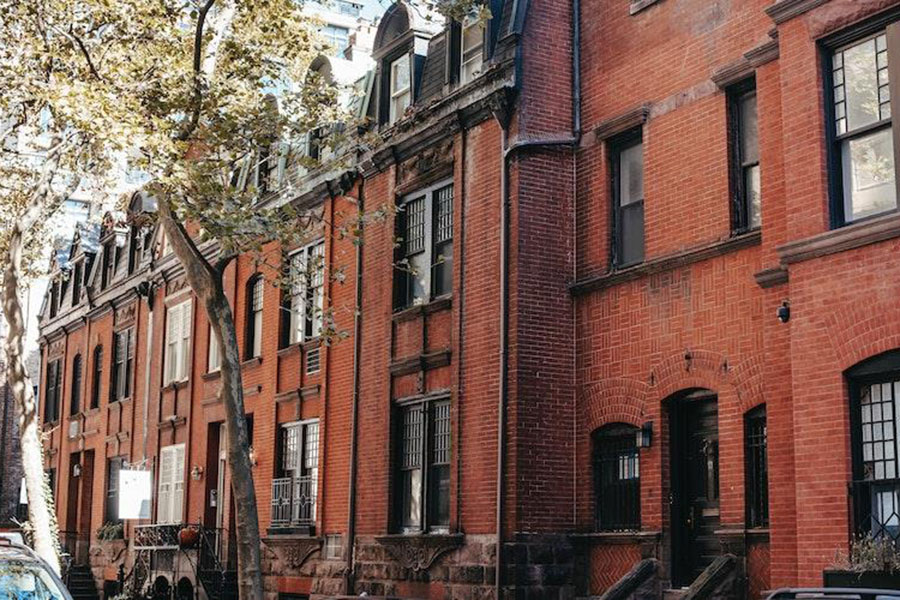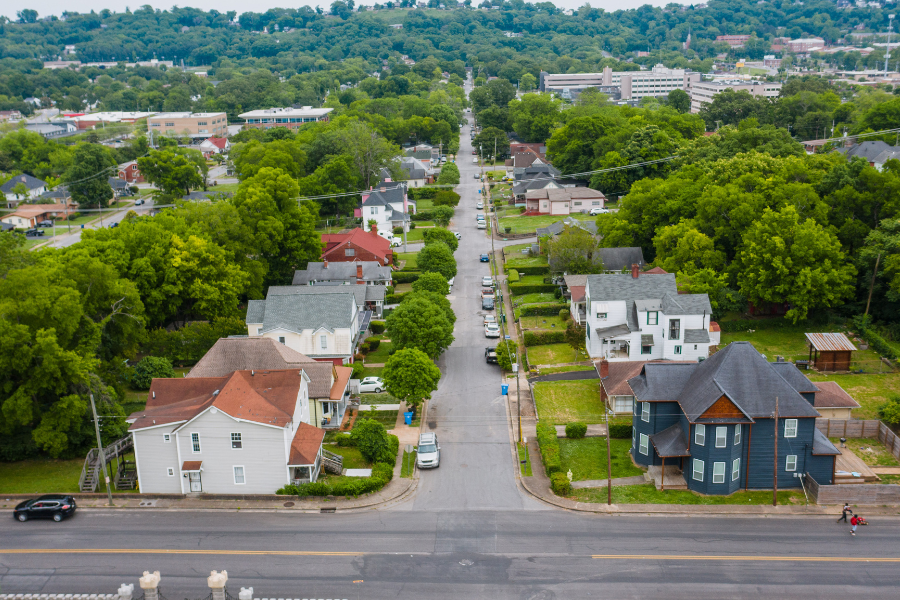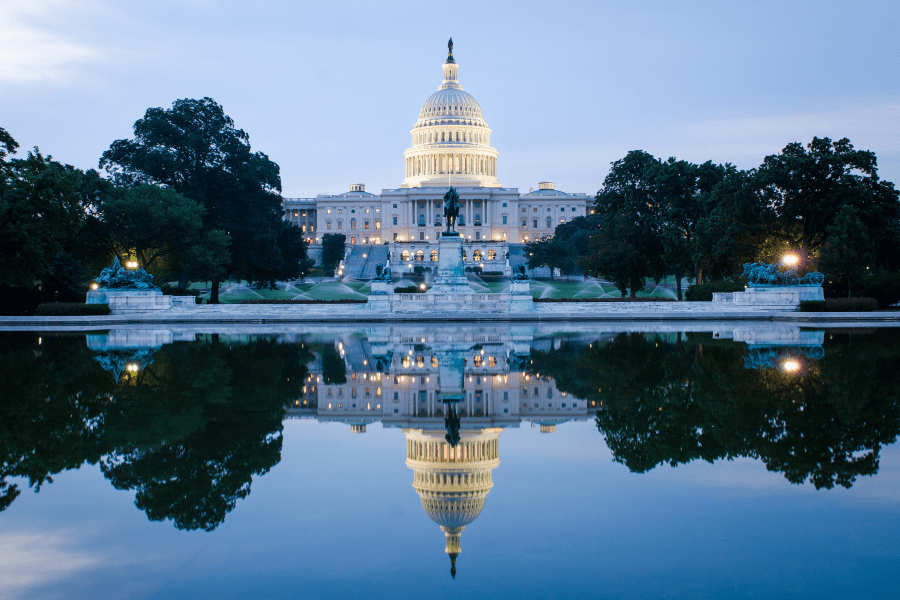Aug 22, 2022
National Focus on Improved Building Codes for Underserved Areas
This summer, the Biden Administration announced a $225 million program to improve building codes to lower utility bills and safeguard residents against extreme weather events. The initiative is one of several funded by the bipartisan infrastructure law to reduce energy use and utility costs for American families.
By: Evelyn Long

Wealth inequality is obviously most harmful for the people most affected by poverty, but its impact is even more pervasive than some may think. It contributes to climate change and environmental hazards that can make all of our communities more unsafe.
Why? Many American cities were shaped by decades of racial segregation and uneven funding, and as a result, underserved neighborhoods are more likely to have energy-inefficient homes. Since residential and commercial buildings create 29% of total greenhouse gas emissions, those with a desire to reduce emissions have good reason to focus improved building codes and program support on buildings in these areas.
This summer, the Biden Administration announced a $225 million program to improve building codes to lower utility bills and safeguard residents against extreme weather events. The initiative is one of several funded by the bipartisan infrastructure law to reduce energy use and utility costs for American families.
It’s likely this program will have ongoing effects on state and local initiatives, too. Home performance professionals should take heed and remain aware of the changes necessary to implement in daily practice.
What Is the National Initiative to Advance Building Codes?
The National Initiative to Advance Building Codes isn’t entirely new. It is intended to provide broad federal support for changes that many state and local governments have been focused on to improve resiliency and reach set climate goals. By design, it encourages communities to adopt (and go beyond) updated building codes with a combination of incentives and technical support.
There’s a lot that participating communities can pick up from others across the nation. For example, the state of California has set aggressive climate goals that involve ambitious “stretch codes” to develop energy-efficient, high performing buildings. Individual localities in the state have pushed even further, with 25 out of 34 local governments adopting stretch codes that exceeded state standards.
The hope is that programs like these can scale nationally to help improve the resiliency and efficiency of building stock. This initiative will provide competitive grants to applicants who demonstrate innovative approaches to further energy, climate, and resilience goals while expanding opportunities for workplace development and furthering environmental justice and equity.
The Administration projects that the updated codes will result in $138 billion in energy savings or about $162 per year per unit. The initiative lays the foundation for green energy, improving indoor air quality, strengthening grid reliability, and increasing resistance to natural disasters. Experts estimate it will save 900 million metric tons of carbon emissions.
How Federal Agencies Hope This Initiative Will Spread to Local Communities
Building codes exist at the state and municipal levels but receive direction and funding from federal sources. The Biden Administration’s goal is for the Department of Energy to require any new projects dedicated to modernizing buildings to follow ASCE guidelines. These provide technical standards for promoting reliability, safety, productivity, and efficiency in civil engineering, often cited by local building codes.
For example, all new electrical projects dedicated to hardening the existing grid should follow ASCE 74, Guidelines for Electrical Transmission Line Structural Loading. Other ASCE standards that Energy Department officials should urge local building codes to adopt include the following:
- ASCE 7: Minimum Design Loads and Associated Criteria for Buildings and Other Structures, determining needs for resilient structural design based on environmental factors like soil and wind loads.
- ASCE 24: Flood-Resistant Design and Construction, to reduce and eliminate flood hazards and their effects.
- ASCE 41: Seismic Evaluation and Retrofit of Existing Buildings, to increase building resiliency in case of a seismic event.
- ASCE Manual of Practice 140: Climate-Resilient Infrastructure: Adaptive Design and Risk Management, to guide infrastructure analysis and design amid a changing climate.
By implementing these standards at local levels, municipalities can ensure residents a higher standard of living. They will enjoy better safeguards against disasters and fewer health risks from the effects of climate change.
Benefits of Increasing Energy Efficiency in Vulnerable Areas
Buildings in vulnerable areas often contain multiple hazards for residents and the environment. While high-density living is an environmental boon, inadequate design makes such living conditions undesirable for those who can afford to go elsewhere.
For example, the urban heat island effect results in temperatures up to 7 degrees higher in the daytime and 5 degrees higher at night. That might not seem like much, but it makes a huge difference in a city like Phoenix, Arizona. As a result, the most affluent crave suburban living, contributing to urban sprawl.
Here are but a few benefits of increasing energy efficiency in underserved areas:
- Greater Resilience to Natural Disasters
Natural disasters like hurricanes, floods, and tornadoes displace residents and create a tremendous drain on emergency services. Organizations like the Red Cross often have to solicit donations in the wake of such disasters. Making buildings more resilient to disaster will result in fewer people requiring alternative lodging while their principal residence undergoes repair. - Improved Building Design Reduces the Heat Island Effect
Improved building design enables people to live and work with minimal discomfort, especially in denser areas. For example, implementing green roofs absorbs CO2 emissions while giving residents a pleasant natural retreat. Restaurants housed within the building can grow fresh, organic produce on the premises. - Enhancing Resident Health
Climate change takes a toll on human health. Air pollution can negatively impact how people live and, without proper home performance, that pollution can seep into residential spaces, too. Improved indoor air quality and energy efficiency will minimize these risks and promote a higher quality of life for residents.
National Focus on Improved Building Codes
The construction industry, and home and building performance professionals in particular, should take note of changes the Biden Administration’s National Initiative to Advance Building Codes. It provides valuable funding opportunities and a chance to become a leader in green building innovation.
Furthermore, this initiative promises to combat climate change and take America’s construction into the future. Building codes and performance are set to become an integral part of the nation’s green new future.





